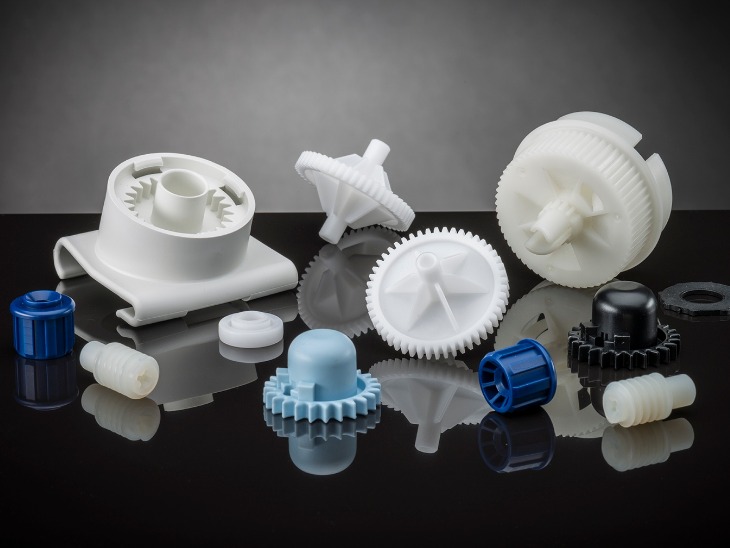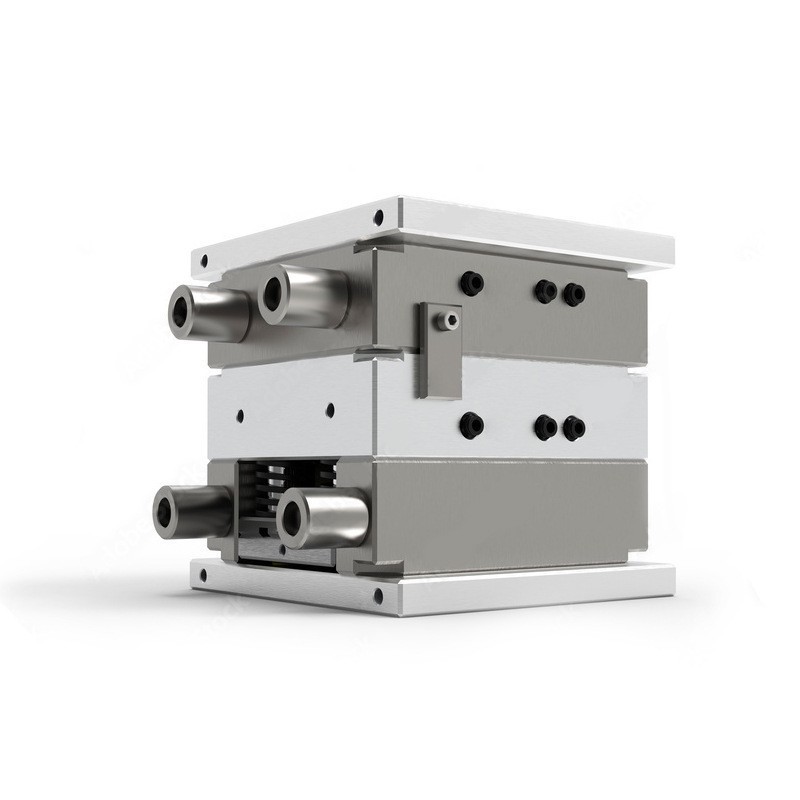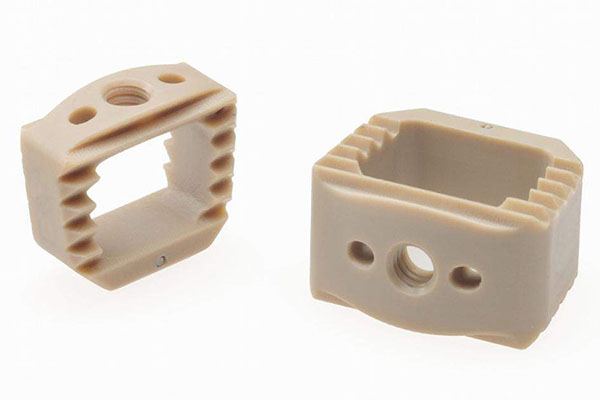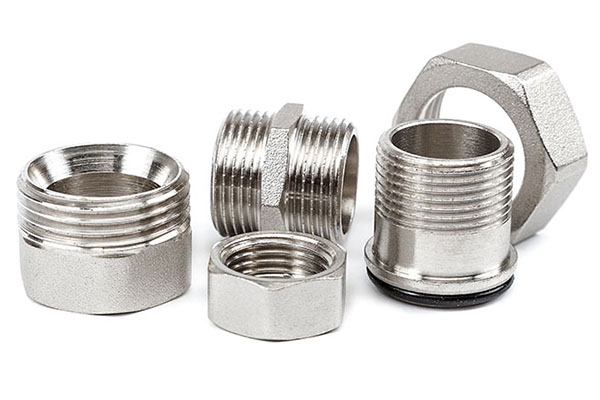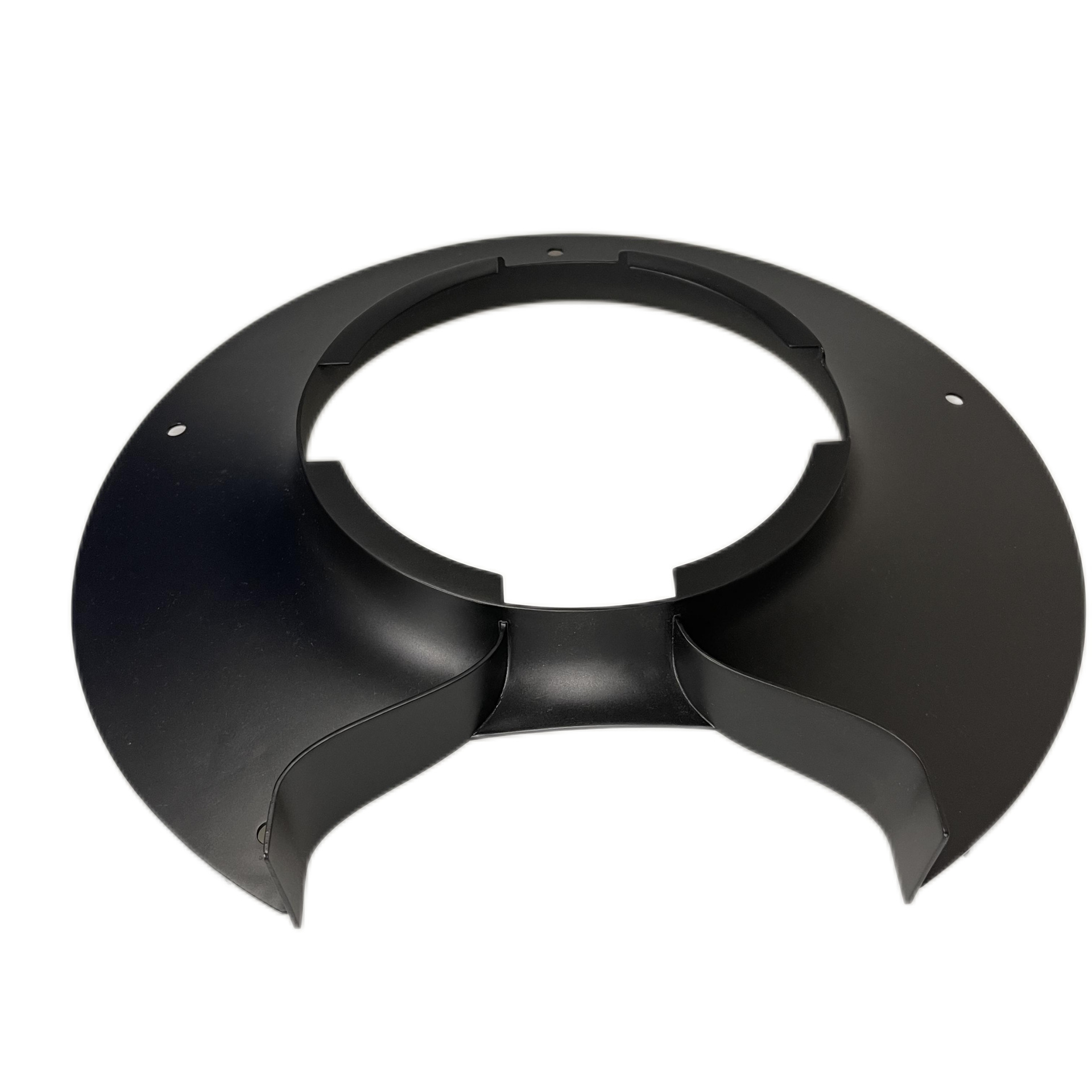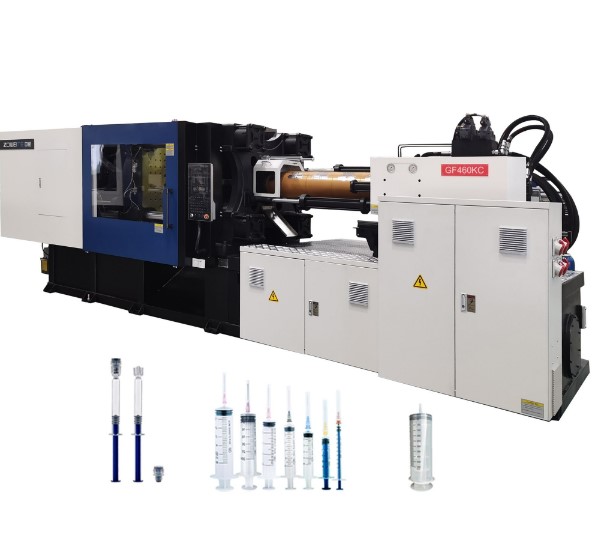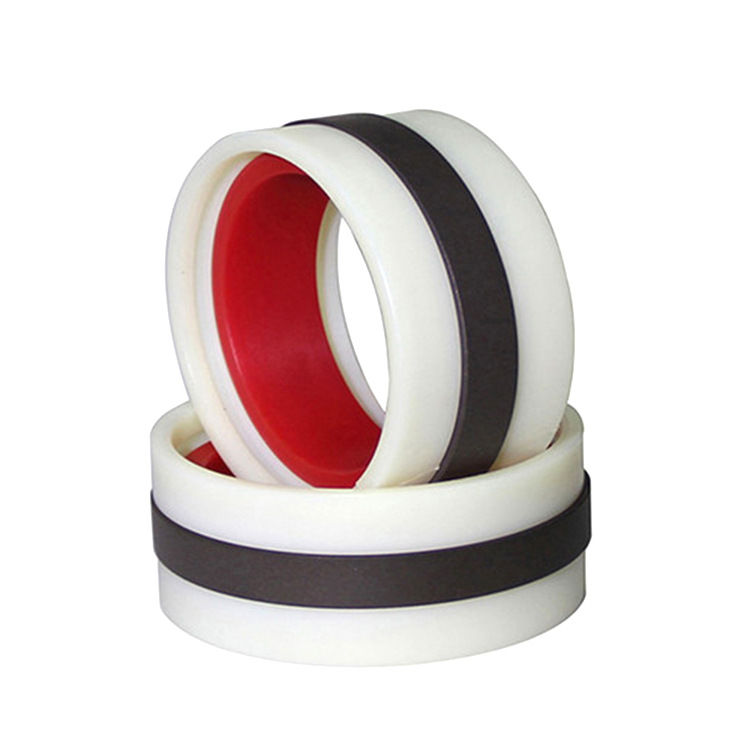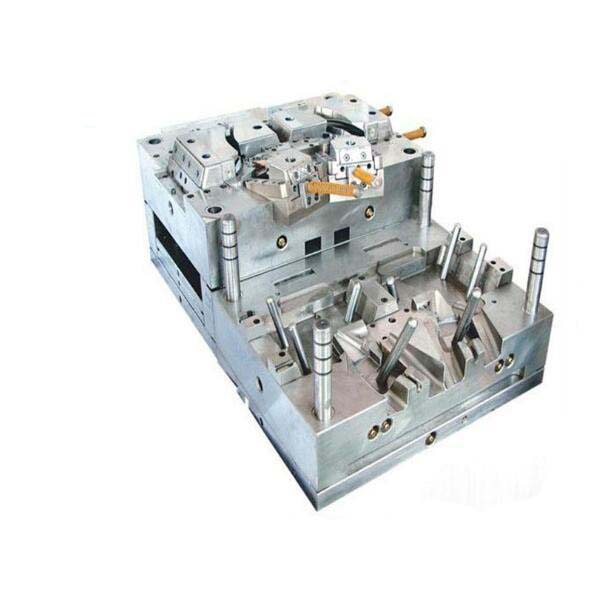What is Multi - Shot Injection Molding?
Multi - Shot Injection Molding, as the name implies, is an advanced injection molding process that involves injecting multiple materials or colors into a single mold cavity in successive shots. In a traditional injection molding process, only one type of material is used to form a part. However, multi - shot injection molding takes it a step further.
Imagine building a sandwich. A regular sandwich might have just one filling, like ham. But a multi - layer sandwich could have ham, cheese, and lettuce. In multi - shot injection molding, different materials are like these different sandwich fillings. The first shot of material is injected into the mold and allowed to cool and partially solidify. Then, another shot of a different material (or the same material in a different color for aesthetic purposes) is injected into the mold, either over or around the first - formed part, bonding with it to create a single, unified component.
This process allows for the creation of parts with complex geometries, multiple colors, and enhanced functionality. For example, in the production of a smartphone case, the first shot could be a hard plastic for structural integrity, and the second shot could be a soft, rubber - like material for a better grip and shock absorption. This combination of materials in one part can't be achieved with single - shot injection molding.
The Process Step - by - Step
- Raw Material Preparation:Before starting the multi - shot injection molding process, the raw materials need to be carefully prepared. Different types of plastics, such as ABS, PP, or PC, are dried to remove moisture. Moisture in the plastic can cause defects like bubbles or poor surface finish in the final product. For example, if the moisture content in ABS plastic is too high, during the injection process, the water vaporizes, creating voids in the part. Additionally, additives like colorants, fillers, or flame retardants may be added to the base material according to the product requirements. These additives are thoroughly mixed with the plastic pellets to ensure uniform distribution.
- Mold Design and Setup:The mold is the heart of the multi - shot injection molding process. A well - designed mold is crucial for the success of the operation. For multi - shot molding, the mold typically has multiple cavities and complex gating systems. It may also include movable cores or slides to accommodate the different shots of material. For instance, in a two - shot mold for creating a product with a soft - touch outer layer and a hard inner core, the mold will have a mechanism to precisely position the first - shot part for the second - shot injection. The mold is installed on the injection molding machine, and proper alignment and clamping are ensured. The machine's parameters related to the mold, such as the opening and closing speed, are set according to the mold's specifications.
- First Shot Injection:Once the mold is ready, the first shot of material is injected into the mold cavity. The plastic pellets are fed into the hopper of the injection molding machine. From there, they enter the heated barrel where they are melted by a combination of heat from the heater bands and shear forces generated by the rotating screw. The molten plastic is then forced under high pressure through the nozzle and into the mold cavity. The injection pressure, speed, and volume are carefully controlled to ensure that the material fills the cavity evenly without causing any short - shots (incomplete filling) or over - packing (excessive material). For example, in the production of a complex - shaped automotive interior part, the first shot might be a rigid plastic that forms the basic structure.
- Cooling and Partial Solidification:After the first shot of material is injected, the mold is cooled to allow the plastic to partially solidify. Cooling is a critical step as it affects the part's dimensional stability and mechanical properties. The cooling time is determined by factors such as the thickness of the part, the type of plastic used, and the mold's cooling channels design. Generally, water - cooled channels are integrated into the mold to remove heat efficiently. For example, a thick - walled plastic part may require a longer cooling time compared to a thin - walled one. During this stage, the plastic transitions from a molten state to a semi - solid state, retaining the shape of the mold cavity.
- Second (and Subsequent) Shot Injection:When the first - shot material has reached the appropriate semi - solid state, the second shot of material is injected. The injection process for the subsequent shots is similar to the first one but with some differences in parameters to account for the existing semi - solid part in the mold. The new material bonds with the first - shot part, creating a unified structure. In a multi - color injection molding scenario, this is when the different colors are added. For example, in the production of a children's toy with a colored outer layer and a white inner core, the second shot would be the colored plastic that covers the first - shot white plastic.
- Final Cooling and Solidification:After all the shots of material have been injected, the mold continues to be cooled until the entire part is fully solidified. This final cooling stage ensures that the part has the required strength and dimensional accuracy. Once the part is completely solid, the mold is opened.
- Product Demolding:The solidified part is ejected from the mold using ejector pins. These pins push the part out of the mold cavity. In some cases, additional mechanisms like air ejection or hydraulic ejection may be used, especially for parts with complex geometries or those that tend to stick to the mold. After demolding, the part may undergo post - processing operations such as trimming to remove any excess material (flash), polishing, or assembly with other components.
Types of Multi - Shot Injection Molding
There are several types of multi - shot injection molding, each with its own characteristics and applications. Here are the main ones:
| Type | Characteristics | Applicable Scenarios |
| Two - Color Injection Molding | Can form products with two colors. It uses two injection units to inject two different - colored plastics into the mold cavity successively. The two materials are usually bonded together to create a single product with a distinct color combination | Products with requirements for appearance color, such as mobile phone cases, toys, and decorative items. For example, a mobile phone case with a black main body and a colored border can be made through two - color injection molding |
| Multi - Component Injection Molding | Capable of forming products with multiple materials. Different materials with various properties, like hardness, flexibility, or electrical conductivity, are injected into the mold in sequence. This allows for the integration of different functions in one part | Products with diverse material property requirements, such as automotive components, electronic products, and medical devices. For instance, in an automotive interior part, a hard plastic for structure and a soft - touch material for a better feel can be combined through multi - component injection molding |
| Insert Molding | In this type, a pre - formed component (such as a metal insert) is placed in the mold cavity before the injection of plastic. The molten plastic then encapsulates the insert, creating a composite part. This process combines the advantages of different materials, like the strength of metal and the moldability of plastic | Products that require the combination of different materials for enhanced functionality, such as electrical connectors with metal contacts and plastic housings, or tools with metal inserts for added strength |
| Overmolding | Similar to multi - component injection molding, but with a focus on adding a layer of material (usually a softer material) over a pre - existing part. The pre - existing part can be a previously molded plastic component or another object. It is often used to improve the grip, provide protection, or add aesthetic value | Applications like adding a soft rubber grip to a hard plastic tool handle, or covering a rigid plastic part with a layer of soft, shock - absorbing material |
Applications of Multi - Shot Injection Molding in Different Industries
Multi - shot injection molding has found its way into a wide range of industries, revolutionizing the manufacturing process of various products.
- Automotive Industry:In the automotive sector, multi - shot injection molding is used to create a variety of components. For example, interior parts such as door handles often require a combination of hard and soft materials. The hard plastic provides the structural integrity, while the soft - touch material on the gripping area offers a better feel for the user. According to industry reports, about 30% of interior automotive components in modern cars are produced using multi - shot injection molding techniques. Exterior components like decorative trims with different color layers or components that need to combine the strength of plastic with the conductivity of a metal insert (for functions like electrical connection in some advanced lighting systems) are also made through this process. This not only improves the functionality of the parts but also enhances the overall aesthetics of the vehicle.
- Electronics Industry:The electronics industry benefits greatly from multi - shot injection molding. In the production of smartphones, the cases are often made with this technology. A hard outer shell for protection and a soft inner layer for shock absorption can be combined in one part. Additionally, the buttons on electronic devices are often made using multi - shot injection molding. For instance, a button may have a hard plastic base for stability and a soft rubber - like top layer for better tactile feedback. In the manufacturing of computer keyboards, the keycaps can be produced with different materials for the main body and the printing area, allowing for clear lettering and durability. It is estimated that over 70% of high - end smartphone cases and a significant portion of other electronic device housings use multi - shot injection molding.
- Medical Device Industry:Medical devices require high precision and strict quality control. Multi - shot injection molding is used to create components such as syringe plungers, which often have a hard plastic body and a soft rubber - like tip for a better seal. Catheter components may also be made using this process, combining different materials to ensure flexibility, biocompatibility, and strength. For example, the outer layer of a catheter might be made of a material that is resistant to body fluids, while the inner layer could be a more flexible material to facilitate insertion. The medical device industry's demand for multi - shot injection - molded parts is growing steadily, with a projected annual growth rate of about 8% in the next few years.
- Consumer Goods Industry:In the consumer goods industry, multi - shot injection molding is used to create a wide range of products. Toys often have multiple colors and different material properties in one part. For example, a toy car may have a hard plastic body and soft rubber wheels made in a single multi - shot injection molding process. In the production of kitchen utensils, items like spatulas may have a hard plastic handle and a soft, heat - resistant silicone head. These products not only meet the functional requirements but also attract consumers with their appealing appearance and user - friendly design.
As we can see, multi - shot injection molding is an indispensable technology in modern manufacturing, enabling the creation of high - quality, functional, and aesthetically pleasing products across multiple industries.
Yigu Technology's Perspective
As a non - standard plastic metal products custom Supplier, Yigu Technology has in - depth insights into Multi - Shot Injection Molding. Our expertise in this field allows us to provide high - quality custom products for various industries.
With advanced equipment and a professional R & D team, Yigu Technology can handle complex multi - shot injection molding projects. We understand the unique requirements of different industries, such as the need for high - precision components in the medical device industry or the demand for aesthetically pleasing and functional products in the consumer goods industry.
Our rich experience in multi - shot injection molding enables us to optimize the process, from raw material selection to mold design and final product production. We can ensure that the different materials used in the multi - shot process bond perfectly, resulting in products with excellent performance and durability. Whether it's a two - color injection for a stylish product appearance or a multi - component injection for enhanced functionality, Yigu Technology is committed to delivering products that meet and exceed customer expectations.
